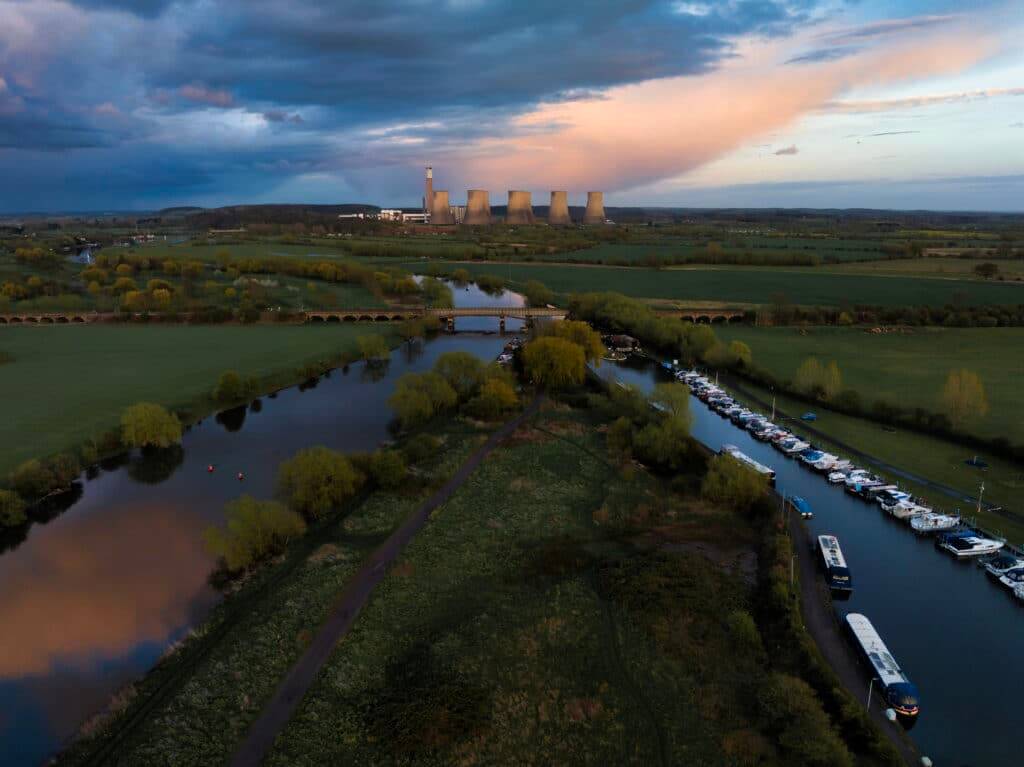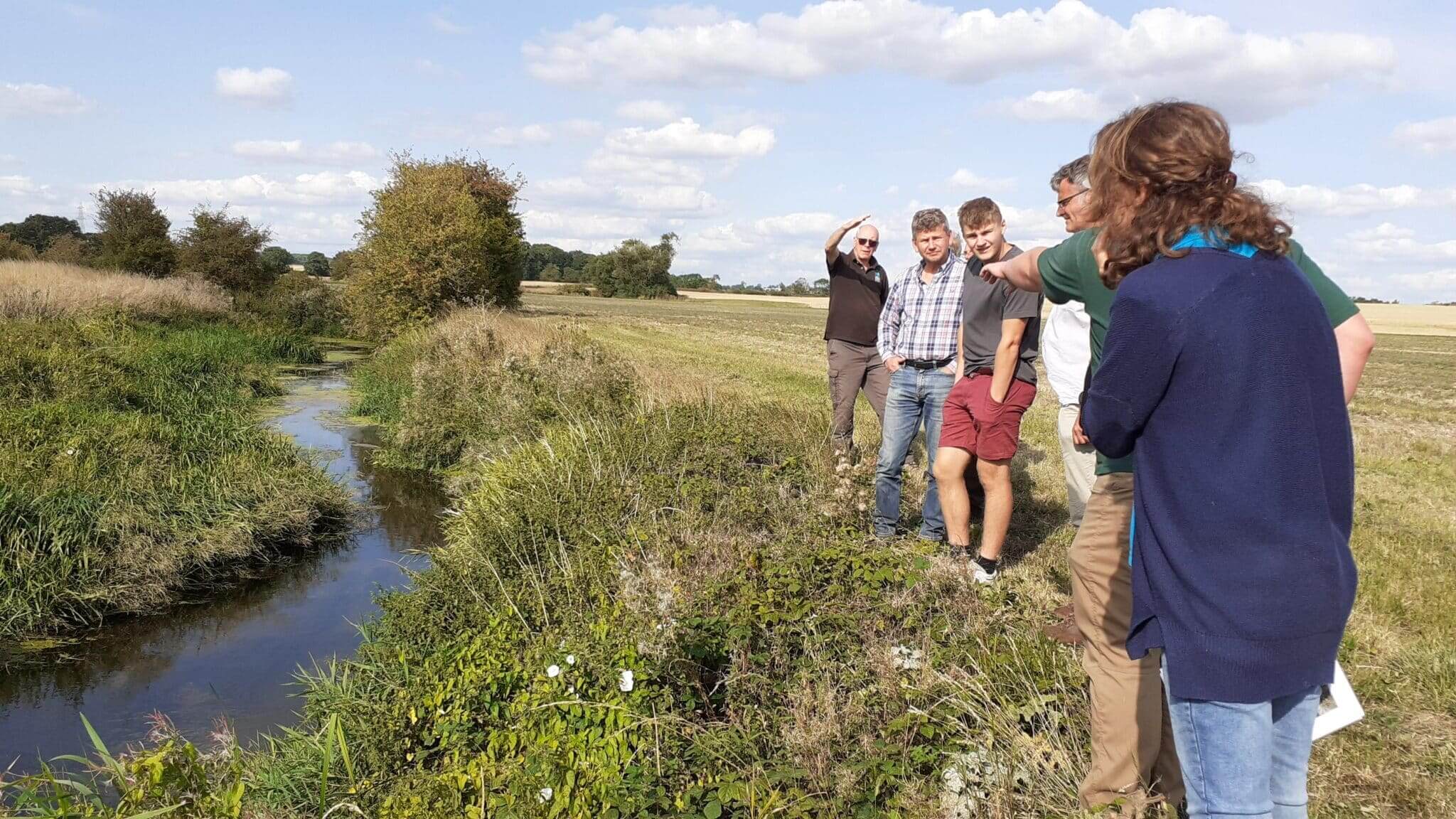“The river is a living thing and it’s going to change. For us, it needs to evolve while we’re still working at the side of it,” says arable farmer James Startin, whose family has lived in Croxhall on the River Mease in the Midlands for more than 70 years.
Flowing through Leicestershire, Derbyshire and Staffordshire before it reaches the Trent, the Mease is a Site of Special Scientific Interest and one of only five UK rivers home to the spined loach, a rare bottom-dwelling fish.
Through the River Mease Partnership, huge efforts are being made to clean up this lowland clay river, through collaboration with landowners, developers, local authorities, water companies, conservation organisations and farmers, like Startin.
It’s what happens on land that most affects water quality and biodiversity in these freshwater ecosystems. Yet, UK rivers are being drowned in a chemical cocktail of pollution from sewage systems, industry, urban developments and agriculture. Three years ago, no river in England and Wales was classed as being in good overall health, and the UK consistently ranks as one of the worst countries in Europe for water quality, according to Surfers Against Sewage.
This growing concern has prompted the community around the River Mease to start a new catchment-based approach to managing the river, taking into consideration everything from planning applications to pollution sources.
“It’s not just about the river, it’s about where the water falls as it flows to the river, so things it might pass en route to the river are as important sometimes as what happens on the river bank,” says Ruth Needham, senior catchment manager at the Trent Rivers Trust.
Needham has been working on this project since 2013, and longevity of funding over the past decade is partly why the Mease has such a good track record. “Almost everybody wants a river with good water quality and good habitats along it, nobody would argue against it, but we have to understand what the different barriers are in order to reach that common goal,” she says.
From a farming perspective, healthier river systems require many measures, including reduced chemicals, keeping topsoil on the fields, wider farming-free spaces or ‘buffer zones’ along riverbanks and wetland areas that slow surface water flowing down.
“If we want clean rivers not loaded with sediment, and a local, sustainable food supply, then we need to work closely and listen to farmers,” says Needham. “It’s not easy. We never attribute blame, we keep everything confidential and we make sure our staff are agriculturally trained so they understand the mentality of a farmer,” she says.
“Farmers don’t want to pollute, but they are so hand-to-mouth about making ends meet financially…[addressing pollution] has to compete with a long list of other demands.”
Slowing the flow
“The river for us is a drainage channel. I understand that a consequence of that is the habitat of the river,” explains Startin, one of about 300 farmers on this 5,000 square km catchment.
“For some people that habitat is the most important thing and for other people the drainage is the most important thing. We need a compromise of both.”
Needham explains that because rivers have historically been engineered to quickly remove pollution, this has sped up the flow, causing problems such as flooding further downriver:
Burton is downstream of the Mease with 3,500 properties at flood risk, and with added pressures of climate change, sustainable water management is more critical than ever.
“We’ve got increased frequency of extreme weather events, both droughts and floods, so we need resilient flood plains and resilient catchments,” says Needham.
Ten years ago, Needham says farmers would have ploughed right up to the riverbank, adding lots of inputs to the land, fertilisers, chemicals, pesticides, to maximise their production.
“Now, quite a lot of farmers are questioning that mentality and recognising that bad water management results in washing soil from the surface of the land, losing valuable topsoil, while causing pollution in the river with high nutrient levels,” says Needham.
Speeding up change
The Mease is just one of around 100 catchment partnerships in England. The biggest obstacle to scaling this up nationally is lack of substantial funds, according to James Wallace, chief executive of NGO River Action UK. “I fully advocate catchment working and have done for years but we find it hard to scale catchment solutions without government backing and funding incentives for farmers,” he says.
Take buffer zones, for example. Most farmers understand they can’t grow crops or graze livestock within two metres of the riverbank, but environmentally, the wider that buffer zone, the better. “Ideally we’d like the whole of the width of the flood plain, which can extend hundred plus metres, to be put to grass, not to arable,” explains Needham, who wants to extend the learnings from the Mease to the whole of the Trent rivers catchment.

“We’re in a water emergency and nobody seems to be behaving like we are. We’re going to run out of drinking water soon with the way that things are going with water shortages, over-abstraction, occlusion,” explains Wallace, who firmly believes we can all make a difference as individuals too: “Send handwritten letters to apply pressure locally to your MP, your water company and to big industrial farmers. We need to vote with water in our minds.”
A new era for rivers
Public awareness around pollution in rivers is at an all time high, with the controversy over sewage leaks expected to be a forefront issue ahead of next year’s election. The government recently announced plans to improve the health of England’s waterways. Money from water industry fines – via a new Water Restoration Fund – will support water improvement projects, but funding that’s dependent on first causing harm isn’t enough, according to The Wildlife Trusts.
“Not a single river in England is in good health and the government’s plan lacks the detail for us to say with confidence whether it could reverse this dreadful situation,” worries Ali Morse, water policy manager for the Trusts.
“While it’s positive to hear proposals to ban wet wipes, protect chalk streams and work across river catchments, there is not enough focus on stopping pollution from farming which is damaging 40 per cent of rivers, lakes and coastal waters. We need to see much better monitoring, advice and enforcement if we’re to stand any chance of restoring our filthy rivers to good health.”












Government on all levels have to come to terms with the fact that these sustainable and restorative projects cannot be left to the whim of individual farmers and water companies. They must be legislated, enforced and publicly funded (at least in part) by heavy fines on polluters. Since Brexit and Covid, water companies already discharging sewage into rivers more than 400,000 times a year during heavy rainfall (and that’s a self-reported number, so imagine higher) have been granted additional permission to discharge when supply chain problems deprive them of insufficient chemicals for treatment. So, if one excuse fails, there’s always another!
Farmers will need practical support to wean themselves off the nitrogen and phosphorous fertilizers that feed these deadly eutrophic algal blooms in our waterways. Warming temperatures exacerbate the combined effects of sewage and fertilizer runoff, so controls on industry must spelled out in the government’s climate legislation.
This is a worldwide problem that threatens every level of life, from mayflies and fish to humans and our pets. In Florida, for example, the toxic “red tide” now clogs the coastline year-round. My aunt and a friend were paddling in beach shallows there a few years ago, unaware that a miles-long raft of algae was moving towards that usually-pristine spot. She says dolphins milled about them and nudged them a few times. My aunt didn’t know what to make of it, until she saw the news the next day: The swift, suffocating Red Tide that killed hundreds of marine creatures that week. “I think they were asking for help,” she said.
It is so good to identify and share integrated solutions which have shown sustainability at least of effort if not durable long term change resulting in a solution for Environmental wellbeing. The word government is full of mixed messages and clearly struggling to function for the Environment. The adoption of a national model with local enhancements should be what is present. Sadly the reality is a resource vacuum. With a little leadership (typically very short supply!) then excessive political dogma could be overcome. To move higher on achievement we must seek Leadership in all aspects. We have skills, knowledge, and wealth. Showing how to apply these assets sustainably for evident reward is key.